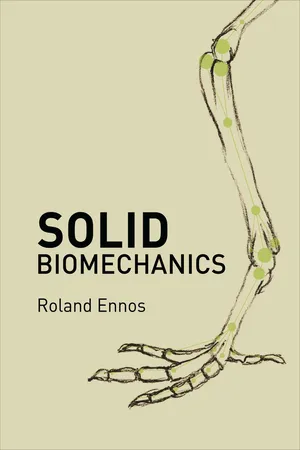Physics
Elastic Potential Energy
Elastic potential energy is the energy stored in an elastic material when it is stretched or compressed. It is directly proportional to the amount of deformation in the material and can be calculated using the formula 1/2 kx^2, where k is the material's stiffness and x is the amount of deformation. When the material returns to its original shape, the stored energy is released.
Written by Perlego with AI-assistance
Related key terms
Related key terms
1 of 4
Related key terms
1 of 3
4 Key excerpts on "Elastic Potential Energy"
- eBook - ePub
Energy Storage
A New Approach
- Ralph Zito, Haleh Ardebili(Authors)
- 2019(Publication Date)
- Wiley-Scrivener(Publisher)
Humans have been using uncoiled mechanical springs in bows and arrows for thousands of years, for hunting and survival. When using bows and arrows, we are in fact harnessing the Elastic Potential Energy that was stored in the unoiled springs. As time passed, upon the emergence of coiled springs, the usage of mechanical springs expanded to many common applications including watches.Imagine, as you twist the knob on a watch, you are causing the spring to coil, and thus, you are powering the watch with Elastic Potential Energy. The watch would then uncoil, gradually in time, during the operation and thus, release the stored energy. Figure 2.4 shows the schematics of the coiled springs in an Elgin watch that was commonly used from 1864 to 1968.To quantify the potential energy stored in elastic coiled structures such as a spring, we express the elastic energy U as(Courtesy of Elgin National Watch Co.)Illustration of the coiled mainsprings used in Elgin pocket watchFigure 2.4(2.14)where k is the spring constant, and x is the displacement of the spring.For deformable bodies that can undergo deformation d or strain ε (the derivative of displacement with respect to position), the linear elastic strain energy (U) and strain energy density (u) (i.e. energy per volume), can be calculated as(2.15)(2.16)where, F is the force on the body, k is the material stiffness (or spring constant), σ is the stress in the body, and E is the elastic modulus.The strain energy density in one dimension can be converted to 2D or 3D based on the actual state of stresses and strains in the body. For example, if a body is subjected to plane stress (i.e., the normal and shear stresses in a plane are non-zero), the strain energy density (u) is expressed as(2.17)where x and y refer to the directions of the normal stresses and strains, and τxy is the γxy are the shear stress and strain, respectively, in the xy plane.2.2 Electrical Energy
Imagine a charged particle at a certain voltage. The electrical or electrostatic energy (or work) associated with this particle can be calculated by multiplying its charge (in coulomb) by the voltage (in volt):(2.18)Now, imagine two particles with respective charges q1 and q2 - eBook - ePub
Integrated Reservoir Asset Management
Principles and Best Practices
- John Fanchi(Author)
- 2010(Publication Date)
- Gulf Professional Publishing(Publisher)
6
Petrophysics
The study of the mechanical and acoustical properties of reservoir rocks and fluids is the focus of petrophysics. Petrophysical information is valuable in well logging, time-lapse seismology, and reservoir modeling. This chapter defines petroelastic parameters, introduces elasticity theory, presents models that can be used to estimate petroelastic and geomechanical quantities, and discusses the importance of petrophysics in time-lapse seismology.6.1 Elastic Constants
The behavior of an object when it is subjected to deforming forces is described by the theory of elasticity. Elasticity is the property of the object that causes it to resist deformation. The deforming force applied to one or more surfaces of the object is called “stress.” Stress has the unit of pressure, or force per unit area, and is proportional to the force causing the deformation. The deformation of the object in response to the stress is called “strain.” Strain is a dimensionless quantity that reflects the relative change in the shape of the object as a result of the applied stress. Figure 6.1 illustrates the relationship between stress and strain.Figure 6.1 Stress–strain curve for an elastic solid.If the stress is not too great, object can return to its original shape when the stress is removed. In this case, Hooke’s law states that stress is proportional to strain. The proportionality constant is called the elastic modulus, which is the ratio of stress to strain:(6.1.1)Dimensional analysis shows that the elastic modulus has the unit of pressure. The elasticity of a substance determines how effective the object is in regaining its original form.Stresses are either one or a combination of three basic stresses: compressional stress, tensile stress, and shear stress. The corresponding strains are compressional strain, tensile strain, and shear strain, respectively. The corresponding elastic moduli are bulk modulus, Young’s modulus, and shear modulus. The following discusses each of these moduli. - eBook - ePub
Janice VanCleave's Physics for Every Kid
Easy Activities That Make Learning Science Fun
- Janice VanCleave, Tina Cash Walsh(Authors)
- 2021(Publication Date)
- Jossey-Bass(Publisher)
Hz), where 1 Hz = 1 cycle per second or one back and forth vibration.Potential energy is the energy an object has because of its position relative to some zero position. It is energy that has the potential to do ‘work.’ Two types of potential energy investigated in this book are gravitational potential energy and Elastic Potential Energy.- Gravitational potential energy is the stored energy an object has because of its position above a specific ground zero. This type of potential energy is due to the force of gravity acting on the object. To obtain this energy, work had to be done on an object to raise it to a higher level above ground zero, such as placing a book on a top shelf with the floor below being ground zero. Gravitational potential energy is directly related to the mass of the object as well as its height above ground zero. When the book is dropped from a specific height, its gravitational potential energy is converted to kinetic energy as the book falls.
- Elastic Potential Energy is the energy stored in an object that can be stretched or compressed. A force is needed to compress or stretch an elastic object. Consider a trampoline, which has the greatest Elastic Potential Energy when it is stretched the most, as does a rubber band. A coiled spring stores Elastic Potential Energy when a force compresses it as well as when a force stretches it. In both cases, when the spring is released, the spring's Elastic Potential Energy results in the wound coils moving back to their normal position. Thus, the Elastic Potential Energy is converted to kinetic energy.
Kinetic energy (KE) is the energy of objects that are moving. Remember, kinetic energy does not cause an object to move, instead objects have kinetic energy because they are moving. A ball at the top of a ramp has gravitational potential energy. As the ball rolls down the ramp, its gravitational potential energy is converted to kinetic energy. There are three types of kinetic energy: vibrational, rotational, and translational. Vibrational KE is the energy caused by a back and forth movement; rotational KE is the result of turning about an axis, and translational KE - eBook - ePub
- Roland Ennos(Author)
- 2011(Publication Date)
- Princeton University Press(Publisher)
If these sorts of materials are stretched or compressed, we are actually stretching or compressing the interatomic bonds (fig. 1.2b). They have an equilibrium length and strongly resist any such movement. In typically static situations, therefore, the applied force is not lost or dissipated or absorbed. Instead, it is opposed by the equal and opposite reaction force that results from the tendency of the material that has been deformed to return to its resting shape. No material is totally rigid; even blocks of the stiffest materials, such as metals and diamonds, deform when they are loaded. The reason that this deformation was such a hard discovery to make is that most structures are so rigid that their deflection is tiny; it is only when we use compliant structures such as springs or bend long thin beams that the deflection common to all structures is obvious. The greater the load that is applied, the more the structure is deflected, until failure occurs; we will then have exceeded the strength of our structure. In the case of the tree (fig. 1.1b), the trunk might break, or its roots pull out of the soil and the tree accelerate sideways and fall over. INVESTIGATING THE MECHANICAL PROPERTIES OF MATERIALS The science of elasticity seeks to understand the mechanical behavior of structures when they are loaded. It aims to predict just how much they should deflect under given loads and exactly when they should break. This will depend upon two things. The properties of the material are clearly important—a rod made of rubber will stretch much more easily than one made of steel. However, geometry will also affect the behavior: a long, thin length of rubber will stretch much more easily than a short fat one. Figure 1.2. When a tensile force is applied to a perfectly Hookean spring or material (a), it will stretch a distance proportional to the force applied
Index pages curate the most relevant extracts from our library of academic textbooks. They’ve been created using an in-house natural language model (NLM), each adding context and meaning to key research topics.
Explore more topic indexes
Explore more topic indexes
1 of 6
Explore more topic indexes
1 of 4



